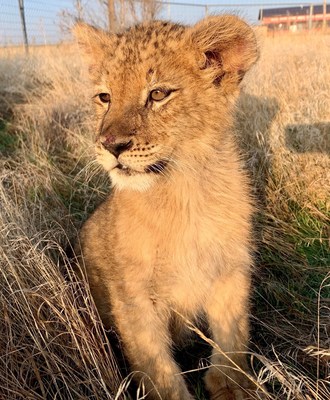The Wild Animal Sanctuary Rescues 17 Lions, Tigers and Hybrids and Two Brown Bears from Notorious Roadside Zoos
KEENESBURG, Colo., Sept. 24, 2020 /PRNewswire/ -- The Wild Animal Sanctuary has become home to 17 lions, tigers and tiger/lion hybrids as well as two brown bears that were removed from "Wildlife In Need," a private roadside zoo in Indiana owned by Tim Stark who was featured in the Netflix docuseries "Tiger King." Three of the lions are juveniles owned by Stark but housed at the Greater Wynnewood Exotic Animal Park in Oklahoma.
Earlier this year, the USDA issued an order to permanently revoke Stark's Animal Welfare Act license. The order cited more than 120 violations of the federal Animal Welfare Act, including for instructing patrons to hit big-cat cubs during so-called "Tiger Baby Playtime" events, swinging and tossing monkeys by their tails during public encounters, and bludgeoning a leopard to death with a baseball bat.
Following the USDA's order to close the facility as well as a lawsuit against the zoo issued by PETA, nearly 200 animals including lions, tigers, monkeys, birds, wolves, and bears have since been relocated to accredited zoos and sanctuaries including The Wild Animal Sanctuary and the Indianapolis Zoo.
The three juvenile lions made news earlier this summer when their cases of severe fly strike were documented by a patron of the Greater Wynnewood facility formerly owned by Joe Exotic of the Netflix series. There was a fourth cub that died over the summer while at Greater Wynnewood and thus could not be saved.
All of the animals are currently being medically evaluated as well as beginning the process of rehabilitation that will lead to their being released into large-acreage, natural habitats.
About The Wild Animal Sanctuary
Located near Keenesburg, Colorado, The Wild Animal Sanctuary is the largest nonprofit carnivore sanctuary in the world, with over 600 rescued animals including lions, tigers, bears, wolves, leopards and other large carnivores living in large-acreage natural habitats. Established in 1980, the Sanctuary operates three locations in both Colorado and Texas with more than 10,000 acres for abused, abandoned and confiscated carnivores and specializes in rehabilitating captive wildlife so they can be released into natural habitats where they can roam freely and live with others of their own kind. More information is available at www.wildanimalsanctuary.org.
SOURCE The Wild Animal Sanctuary
News published on and distributed by:




